Donda
I’m on record as being a pretty strong Kanye West ‘guy.’ I feel compelled to put down some of my thoughts on Donda:
I think the album is uneven, though after the eighth track it takes a slightly more linear direction, incorporating more of his recent gospel sound (though not as obsessive as Jesus is King).
I appreciate Kanye that always trying to push boundaries but there’s not a real cohesive feel, at least at the beginning of the album. The Donda Chant gives way to an operatic Jail, followed by God Breathed & Off the Grid, – it’s a difficult introduction to the album, which ends up being smoother and more cohesive after the first handful of tracks. This is surprising because his tracks/albums usually read like chapters in a book (eg TLOP is four distinct chapters, four/five tracks each).
At this point, I have begun to start this album at Junya, which is where I think the album truly starts to flow. That said, here are some comments on various tracks.
Jail – I enjoy the Jay-Z/Kanye sound. Good track. Good “real” opener.
Jonah – Good track. Very Kanye sound minimal yet distinct. Houston & Chicago influence here was a nice feel.
Hurricane – what can I say, I legit LOVE The Wknd. Guy hits my party vibe 1000%.
Ok Ok – Strong party track. Also I’ve come around big time on this “style” of rap, Lil Yachty & Rooga (!) crush it. Kanye always tends to get the best out of his guests and that is no small feat, especially most of these guys with whom I rarely had previous exposure.
Junya – this is where the album really finds itself. First organ/gospel song and Kanye feels & sounds at home.
Moon – beautiful track. Cudi duo comes back together seamlessly. Really pretty song.
Heaven & Hell – really love how he flips the Make a Living sample at the beginning. Song really evolves.
Keep My Spirit Alive – Westside Gunn and a very Jay Elec-sounding “Conway the Machine” drop good verses.
Believe What I Say – literally had me up and dancing (!). Genuine childlike smile hearing the extensive Lauryn Hill sampling. I don’t genuinely do this when I’m giving an album a proper listen but I played this one about three times before moving onto the next track.
Jesus Lord – wonderful track, elevated spiritual Kanye. . .and a sublime Jay Electronica verse.
Tell the Vision – what can I say, this Pop Smoke sound is intriguing. I tried to avoid all the post-humous hype but there was definitely “something” there for that guy. Good job Kanye handling it delicately.
Pure Souls – picks up beautifully from Believe What I Say. Another gospel get up and dance with some nice flow elements from Kanye. A fun track.
No Child Left Behind – captivating, chills inducing. Love this track. Shout out to Sha’carri Richardson.
Ok Ok pt. 2 – love the reggae hip-hop sound (eg Damien Marley) from “Shenseea”
Jesus Lord Pt. 2 – Jadakiss! Really was wondering what was up w all the Pt 2s but the callbacks w different guests or mixes are cute, call it an encore.

This would have been a great early summer album, but as it is, I expect to keep this in rotation well into 2022. Solid “B+” for me because of the numerous good or better tracks, but understand a lower overall grade due to the miscalculated introduction and about 7 “meh” tracks.
Dodgers. 2019.
It was in an uber on the way back to Sherman Oaks after “The Rich Hill Game” that I swore off the Dodgers – not as a team, definitely not in my heart, but from ever expecting them to actually win a World Series. I still remember the Yasiel Puig blast in the bottom of the sixth inning, a moment I was certain would take its place in the Dodgers pantheon along with Kirk Gibson‘s blast in 1988. The energy in the stadium at that moment was as frenetic as I’d felt at a sporting event, and I was nearly driven to tears with joy. The Dave Roberts/Rich Hill ‘miscommunication‘ followed, and the entire season fell apart, along with the very fabric of my Dodgers fanmanship.
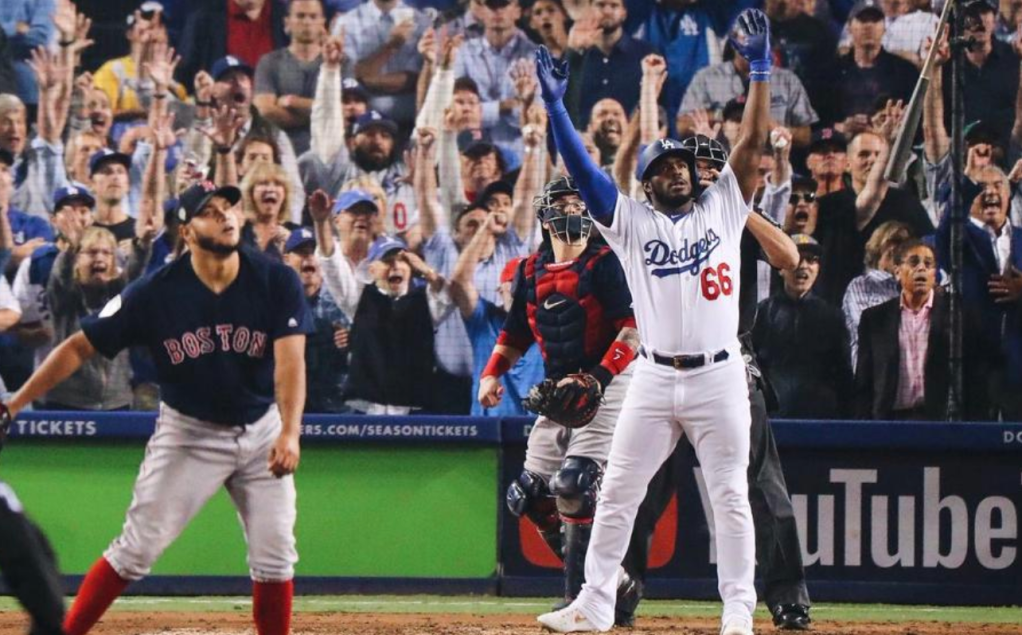
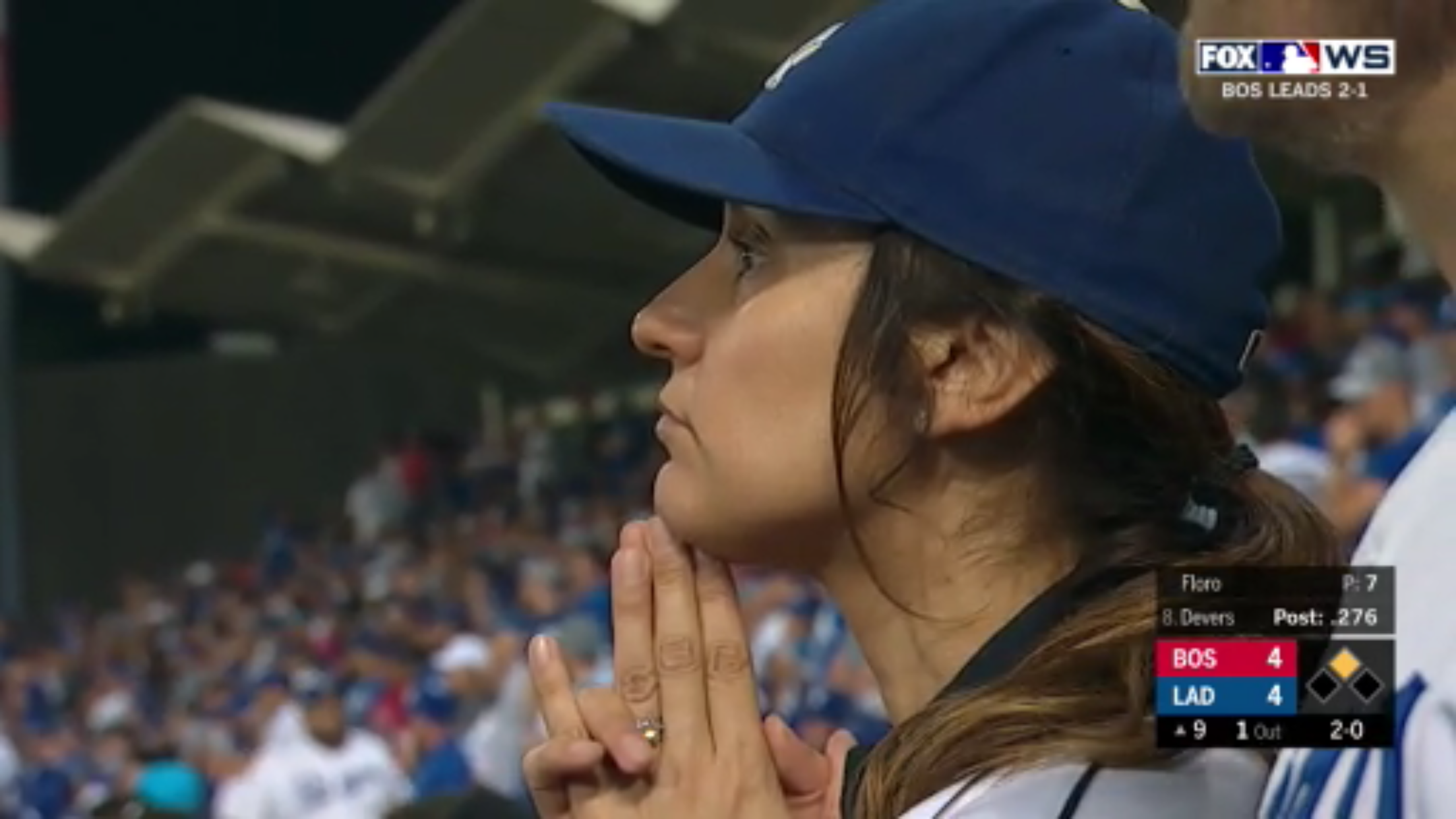
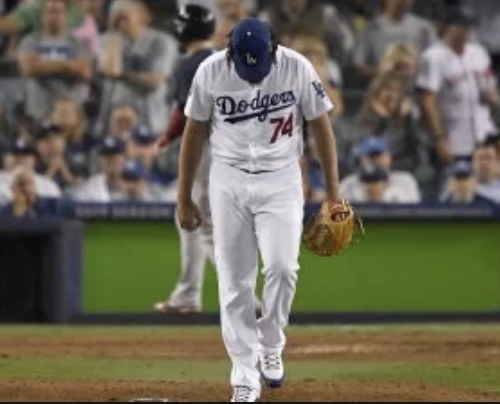
The offseason was rough. To cut to the chase, I didn’t want the Dodgers to acquire Bryce Harper, even though he, along with Puig, would qualify as what passes for my ‘favorite player’ as an adult. But then the Dodgers traded Puig! I despised the move, until I realized that it could only mean one thing – the Dodgers were going to get Harper!!! Why else would they trade the beloved, albeit inconsistent, fan-favorite? It had to be the genius of Andrew Friedman’s front office because, well, Matt Kemp was jettisoned in the deal too.
They were clearing out salary. . .then the days ticked by. So did the weeks. Then they signed AJ Pollock. Okay, quick pause for my thoughts on Pollock, the former Diamondback that would wreck the Dodgers when he was healthy: oft-injured, a pesky hitter with decent pop, a scrappy fielder that could pick off a runner, and a guy that could really help your team as your second-best outfielder. But the Dodgers signed him, seemingly instead of Harper, and that pissed me off. He was going to play 100-120 games per season for the Dodgers, I thought.
Spring Training started and not only was Harper unsigned, but the Dodgers were effectively out of the running. Until they were back in it. My heart was in my throat – would they really pay the rumored $40-$50million/season he’d require for a short contract? You think Guggenheim, you think about the disastrous TV deal that benefits nobody except the coffers of the organization, and you say, “it’s not my money – let’s do it.” But the Dodgers are too smart for that. From a business perspective. But what about the fans, you ask. And what about me? I personally want the first flag in 31 years, and with this offseason, one of minimal tinkering – Pollock, Joe Kelly, Russell Martin, and that’s it? Did the team actually get better, as some say, with addition by subtraction?
I personally feel the Dodgers are a worse team in 2019 than they were in 2018. Yet they still may be positioned to achieve the ultimate goal simply because of how the team is constructed. Back-to-back World Series provide a strong proof of concept, that the depth in this organization – and its deft application by Roberts – is a winning formula for the regular season.
Justin Turner and Cody Bellinger figure to be in the lineup every day in 2019. Corey Seager returns; he’s looked slick at shortstop in the spring, and still has one of the sweetest swings in the game. Kiké is now Enrique Hernandez, and after a two-year journey under Chase Utley’s wing, seems to have finally matured – with a revamped swing – and won the starting second base job outright. Austin Barnes will land somewhere in between the energy-infusing, quick-twitch backstop he was in 2017 and the disappointment he was in 2018, and splitting the job “60/40” with Russell Martin will provide a solid catching tandem. Max Muncy is a problem at first base, both defensively and offensively – he looked, in Spring, more like the player the A’s released in 2017 than the 2018 Home Run Derby participant. I do feel that Bellinger’s outstanding glove is nullified by placing him in right field. Joc Pederson is who we think he is, a 25-30 home run bat that will hit around .229 in a full season, but he may not get the chance as this is make-or-break time for Alex Verdugo, who looks primed to win one of the starting outfield slots by early May, and has proven everything he could at the minor league level. Chris Taylor is still going to provide a ton of backward K’s to go with his near-20 home run season, and is a great super utility player. And yes, David Freese is on the club again, an underappreciated piece in this mosaic of pretty good ballplayers up and down the roster.
The pitching, as always, is the key. We knew Kershaw wasn’t ever going to make 30 starts again, but to begin Spring Training with a balky arm and start the season on the Injured List is a cruel reminder for Dodger fans. With the brittle Rich Hill also shelved with a knee sprain, the Dodgers will look to the resurgent Hyun-Jin Ryu to start Opening Day, and hopefully repeat a wildly successful 2018 campaign. Walker Buehler, the true Ace, is back in the fold, but the organization is “slow-playing” the Justin Verlander clone after extending him last year. Additionally, Kenta Maeda and Ross Stripling are back, and Julio Urias is going to get his chance to stick in the rotation, unless the innings limitations are imposed upon him as well. Regardless, the depth is there but another arm – Dallas Keuchel, anybody? – would go a long ways in quieting concerns about another season of record-breaking trips to the mound by Honeycutt & Roberts.
I do like the bullpen, led by the newly-svelte Kenley Jansen, fresh off of heart surgery and full of guile, with (hopefully, the 2018 version of) Pedro Baez showing up as the set-up man. Joe Kelly is a little bit of an overrated acquisition as his career stats don’t exactly jump off the page, but he’s a veteran and as they say, his ‘presence’ should help the younger releivers, such as Caleb Ferguson and Yimi Garcia. Scott Alexander and Dylan Floro round out the pen, and yeah – if this sounds familiar, it’s because this really is nearly identical to the 2018 Los Angeles Dodgers.
That’s right, the team that went to the World Series. The Nationals have a fearsome rotation; the Cubs underperformed in 2018 and still went to the playoffs; the Phillies, as you may have heard, acquired Bryce Harper. The Mets are improved and the Rockies are still tough. But realistically, is there a National League team better positioned than the unimproved Dodgers? I really don’t think so. This organizational philosophy is clearly successful and they have laid the blueprint for regular season and (at least, National League) playoff success and they are continuing to follow the same formula.
For as much flak as Dave Roberts takes for his ‘game management,’ he’s one of the most adept clubhouse generals in all of sports and universally beloved by his players. That is not insignificant in the grind of a 162-game, nine-month season. Just make sure this year that when they’re in the World Series again, there are no more miscommunications. It would be too much for my heart to bear.
And as always, the obligatory Vin Scully reference:
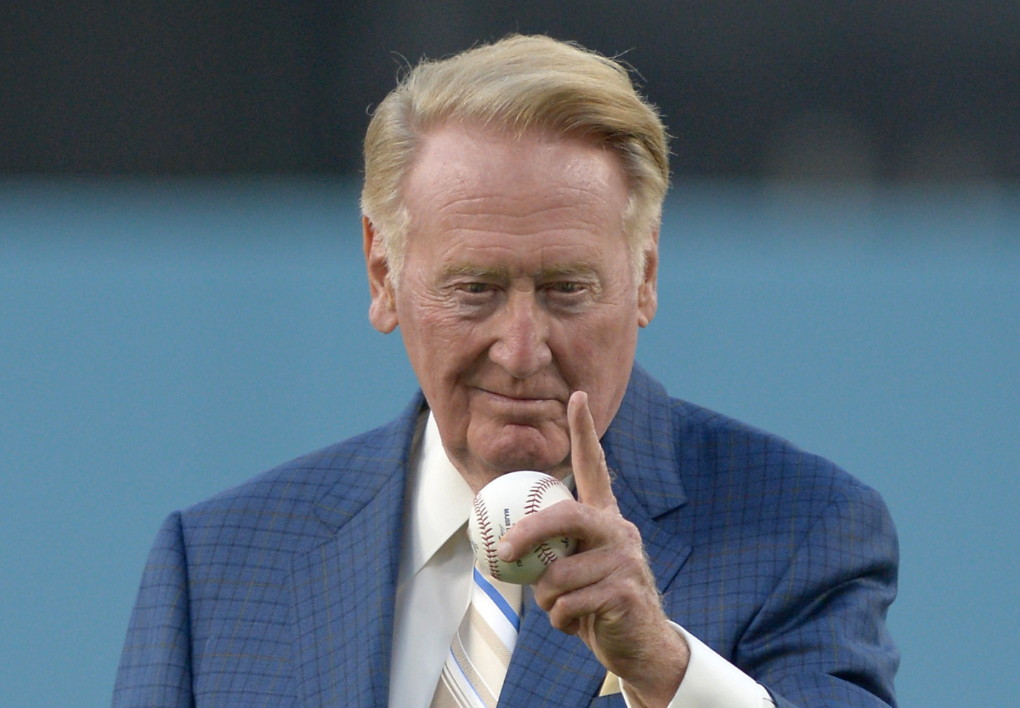
It’s time for Dodger baseball. . .
Defeating Dodger Doldrums
I am 40 years old, yet I fight to choke back tears upon the completion of baseball season.
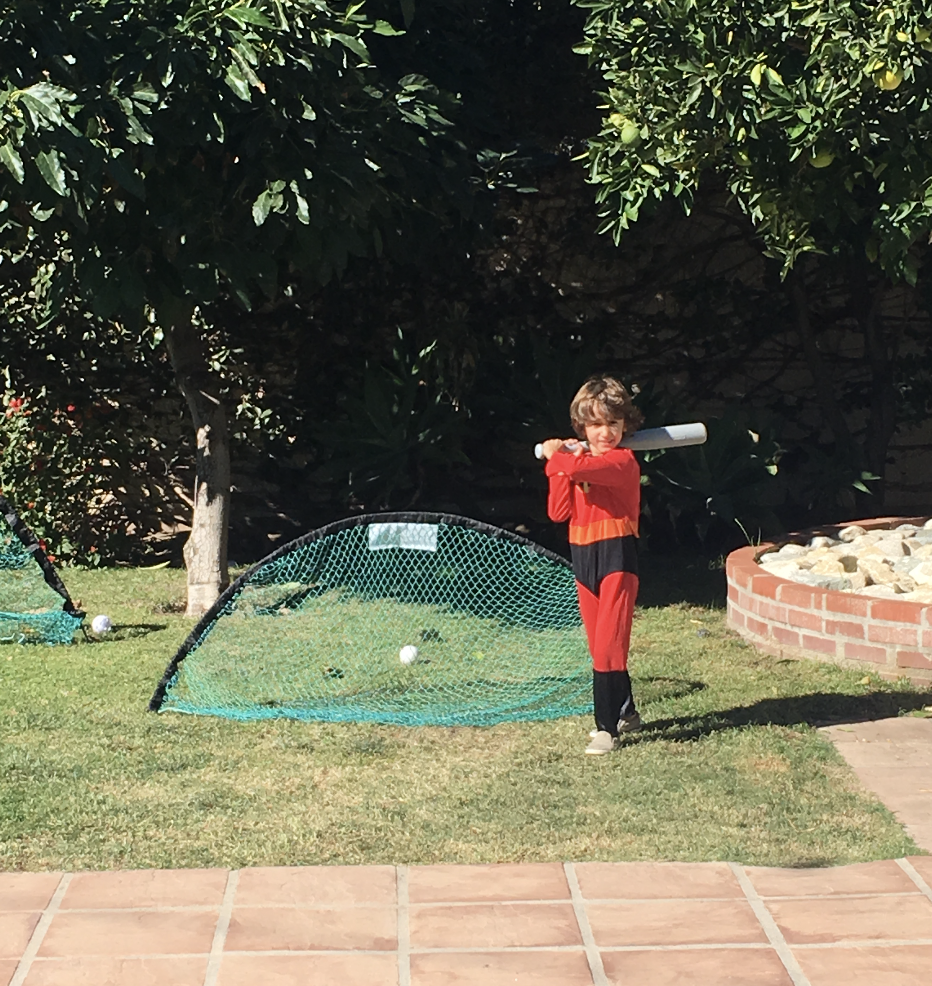
2018 World Series Preview: Dodgers vs. Red Sox
As I sat down to do my analysis, I really thought I was going to see more of a discrepancy between these two teams. The Red Sox won 108 games; the Dodgers needed an extra game to get to 92, in a supposed ‘weaker’ division, and in the ‘junior varsity’ National League. The Red Sox cruised through the season, having won more than 67% of their games up to this point; the Dodgers were nine games out of first place on May 8th, and 10 games under .500 on May 19th. In addition to the extra win necessary to get into the Division Series, they were taken to seven games by a good, but not great, Milwaukee Brewers team. The Red Sox, on the other hand, dismantled the Houston Astros, last year’s World Champions, by taking the final three games of the series in the Astros’ home park. So through that lens, the Red Sox should be a huge favorite. It says here, however, that these two teams are VERY evenly matched – and whoever wins this series better be packing some scary costumes because they will need the full seven games to hoist the trophy on Halloween night in 2018.
Red Sox postseason bullpen stats:


Red Sox 2018 Postseason Batting:

Dodgers 2018 Postseason Batting:
Dodgers vs. the 818 Brewers (NLCS Preview)
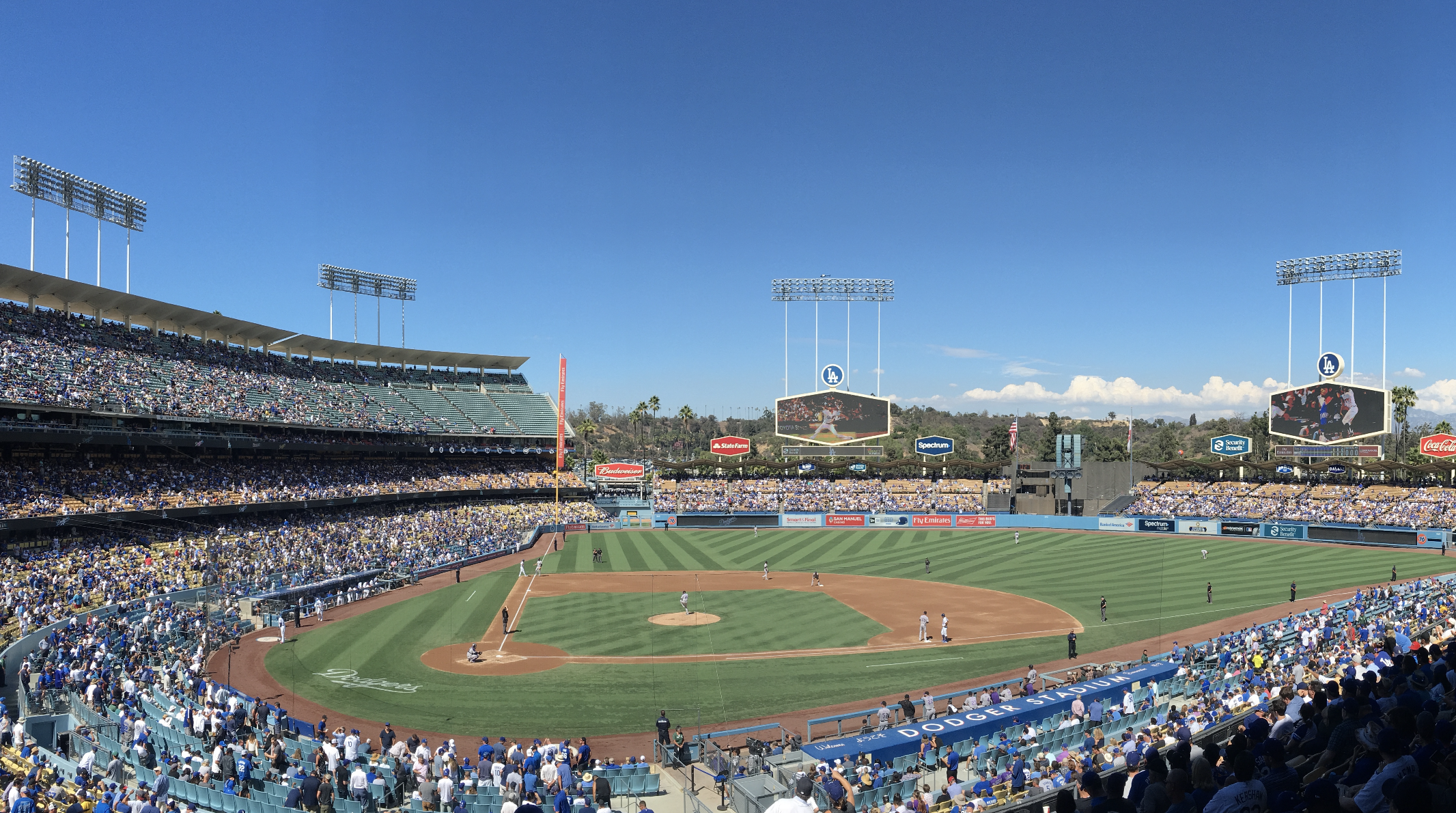
With a starting pitching staff of Jhoulys Chacin, Chase Anderson, Gio Gonzalez, and Wade Miley, the Brew Crew wins games from the backend with Jeremy Jeffress, Josh Hader, Corey Knebel, and to a lesser extent Dan Jennings and Corbin Burnes. The Jeffress/Hader duo has been particularly remarkable this season, combining for a 1402 record and 1.85 ERA, with 232 K’s in 158 innings. Knebel is the closer, and after mid-season struggles that prompted a demotion to AAA, he has reclaimed closer duties, though his 3.58 ERA on the year proves that he is indeed fallible. They key, ultimately, is for the Dodgers to jump out to early leads, as they have excelled in that area this season, scoring in the first inning 38% of the time during the 2018 season, second in MLB. Brewers manager Craig Counsell has proven adept at managing a pitching staff, even going with an outright “Bullpen Game” in Game 1 of the National League Division Series vs. the Rockies. Starting Brandon Woodruff – who only appeared in 19 games during the season, starting four – the Brewers built the proverbial bridge throughout the game, winning the first of what would be an eventual sweep.
The Dodgers, on the other hand, come in to the series with outstanding starting pitching. Clayton Kershaw, bemoaned throughout the year as he evolved from power pitching left-hander to crafty off-speed southpaw, still compiled a 2.73 ERA. Walker Buehler, despite his second inning jitters in Game 3 of the NLDS, proved his mettle, completing five innings even after the implosion, and is truly an Ace-in-the-making, if not already. Perhaps most impressively for the Blue Crew, Hyun-Jin Ryu extended his amazing 2018 season, taking his regular season 1.97 ERA into the postseason and spinning seven more scoreless vs. the Braves in a surprise game one start. Rich Hill provides a change of pace for virtually any lineup, throwing a higher percentage of curveballs than any pitcher in the major leagues. he also delivers from many angles, which tends to befuddle hitters two times through the lineup. It is on that third time around, however, that Hill struggles, and along with the other starters – the bullpen plays a prominent role for manager Dave Roberts.
That is where the Dodgers are the most vulnerable. Though Kenley Jansen stands as the inimitable closer, he has been vulnerable at times throughout the season, perhaps a result of his heart issues, or perhaps mechanical – but regardless, his 3.01 ERA is downright unsightly for a pitcher of his magnitude. Roberts tends to use a pastiche of relievers based on matchups, but it looks as if Kenta Maeda has been his ‘eighth inning guy’ in recent weeks. Pedro Baez, the source of much heartache and consternation for Dodgers fans over the last few years, has re-emerged as a reliable power arm, and is the preferred seventh inning pitcher, though he may be saved for matchups against Ryan Braun. Otherwise, Dylan Floro, Scott Alexander, and Ryan Madson will be counted on to get the difficult outs, as well as Ross Stripling, who is expected to be placed on the NLCS roster. Madson could end up being key here – as he was during the Royals run – as he was a late-season addition for the front office, a 38-year old cast aside by his former club, picked up as yet another reclamation project. The Dodgers hopes that he turned into the next Brandon Morrow were quickly dashed during some uninspiring outings in late August and early September, but it appears he has rediscovered his devastating change up, getting two key outs with the bases loaded in the Game 4 clincher vs. the Braves. He is another example of Andrew Friedman and Farhan Zaidi valuing experience and track record to help guide the Dodgers to another World Series appearance.
But to get to the bullpens, both teams need to hit – this is where the Dodgers, in my assessment, have the advantage. Much has been made of their struggles to hit in clutch situations, but their team record 235 home runs has enabled Roberts to stack lineups with the specific purpose of bludgeoning opponents. This team is more Eal Weaver than Whitey Herzog, and Roberts is content to wait around for the longball, because in an offense with eight players that eclipsed 20 home runs in 2018, the odds are that the home run is only a few swings away. Roberts favors platoons, and really uses a “vs. righties” and “vs. lefties” lineup that frustrates fans, but the players have bought in and, in the words of Matt Kemp, “we’re trying to win a championship, and every guy is on the same page, and our own common goal is to win a championship.” That is a testament to the respect that Roberts receives in the clubhouse, and a major reason that the Dodgers are able to function with this much talent in one room. The fact is, Justin Turner is still their best hitter and as a postseason on-base machine – he is third all-time to Babe Ruth and Lou Gehrig in on-base percentage (minimum 100 PA) – and the team will go as he goes, regardless of who is around him. It does appear that Manny Machado is starting to get locked in, and I expect a big series out of him vs. the Brewers. Yasiel Puig’s approach has been notably improved this season, Kiké Hernandez is playing an extremely valuable & versatile part in this run, and look out for more big moments from David Freese, former World Series MVP and another elder, with clutch hits and key experience in his bones.
Now on to the 818 Brewers. Owner Mark Attansio sits on the board of Studio City Harvard-Westlake High School, not to be confused with Westlake High School, the alma mater of 2018 NL MVP-to-be Christian Yelich. Right down the 101, you’ll find Mike Moustakas alma mater Chatsworth High School, a rival of Ryan Braun’s Granada Hills High School. Safe to say that most, if not all, of these folks grew up rooting for the very team they will be trying to defeat in the NLCS. The Brewers’ offense is not nearly as potent as the Dodgers, but with Yelich’s 36 home runs ande 119 RBI backing up Lorenzo Cain’s .395 OBP, with Jesus Aguilar and Travis Shaw’s 35 and 32 home runs, there is more than enough pop to do some damage to the Dodgers. That said, Dodger pitching coach Rick Honeycutt is a master at game planning, and the Brewers’ lineup has enough holes to provide outs when necessary. Catcher Manny Pina and shortstop Orlando Arcia each hit less than 10 home runs and batted lower than .262. Braun is not the player he once was, but he did launch 20 home runs in 125 games. The Brewers have a little bit of depth with Eric Thames, Schoop, Domingo Santana, Hernan Perez, and recent postseason hero/backup catcher Eric Kratz, so Counsell will have some good matchup options in this chess match.
It is worth noting that the Dodgers took four out of seven games from the Brewers during the 2018 regular season, and that’s the exact outcome I’m picking here. Dodgers in seven. When the Dodgers score first, or more accurately – when the Dodgers attack the Brewers starting pitching – they will win. If the game gets to the bullpen with the Brewers ahead, it will be tough for the Dodgers to surmount. The key to the series will be the bullpen – if Kenley Jansen holds up, the Dodgers will once again face the Houston Astros in the World Series.
KIDS SEE GHOSTS
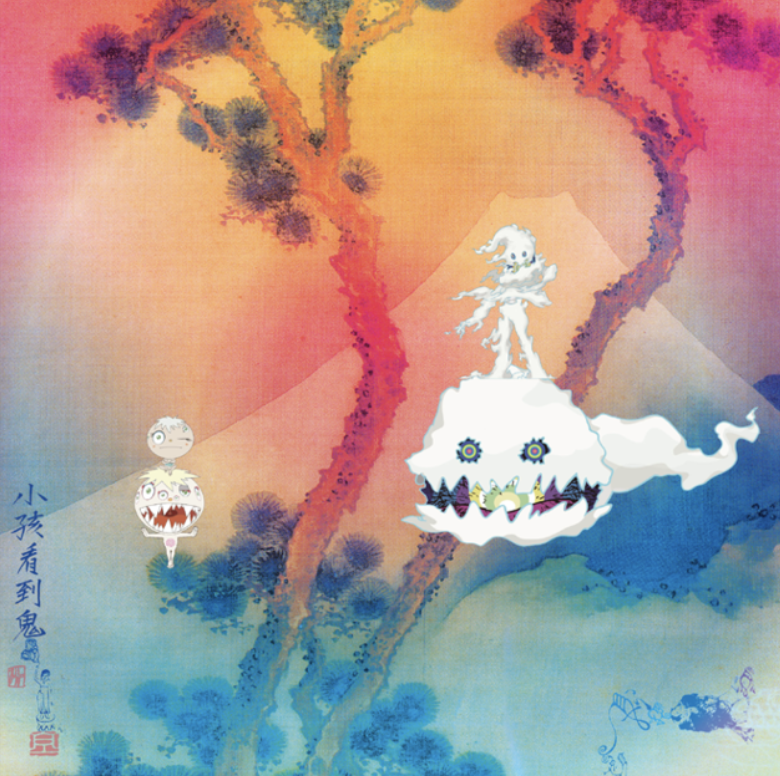
The third release in the Kanye West pentalogy, KIDS SEE GHOSTS serves as a wildly successful (re)union of West and Kid Cudi. The chemistry exudes throughout the album, as Cudi’s emotive howls haunt Kanye’s ghoulish production.
Operating as the climax in Kanye’s dramatic structure, KSG follows Pusha T’s Daytona energetic sultriness with an honest emotionality absent on ye, Kanye’s expositionary outset. From the moment “Feel the Love” hits, you know that this is the Cudi/Kanye chemistry you loved on the unexpectedly influential – and excellent – Man on the Moon I and II. Pusha-T’s verse ensures that the listener is hearing a continued musical creation with the release of these five albums in subsequent fashion.
Coming in at a tidy 24 minutes, the album seethes, emotes, and viscerally envelops the listener. It moves fast, but lingers. The Andre3000 (nee Benjamin)-produced “Fire” literally picks up musical threads from “Feel the Love” and flips into a Kanye verse much different than anything on ye. The words are sharper, the syllables are placed with more exactitude, and the mirroring of voice/track adds a layering more robust than the minimalist ye.
Cudi and Kanye have both expressed mental health challenges and it fuels KSG. The adopted moniker for the duo, KIDS SEE GHOSTS, is appropriate – and the music feeds off of the visualization of the name. “4th Dimension” takes the 1936 Louis Prima single “What Will Santa Claus Say,” features a haunting echo and a spine-tingling bass line that conjure both literal and mental ghosts.
“Freeee (Ghost Town Pt. 2)” once again nods to the continuity of This Kanye Project, as Kanye exudes on the the hook “I don’t feel pain anymore/ guess what baby I feel freeeee.” This harkens back to “Ghost Town” on ye as 070 Shake painfully exclaims “we’re not the kids we used to be/ I put my hand on a stove to see if i still bleed.”
“Reborn” is where we see both Cudi and Kanye at their modern best. “I’m so reborn/ keep movin’ forward” is Cudi’s hook, sung in straight-forward and melancholy fashion, leading right into Kanye’s best verse in a long time:
Very rarely do you catch me out
Y’all done “specially invited guest”‘d me out
Y’all been tellin’ jokes that’s gon’ stress me out
Soon as I walk in, I’m like, “Let’s be out”
I was off the chain, I was often drained
I was off the meds, I was called insane
What a awesome thing, engulfed in shame
I want all the rain, I want all the pain
I want all the smoke, I want all the blame
Cardio audio, let me jog your brain
Caught in the Audy Home, we was all detained
All of you Mario, it’s all a game
Introspective, honest, addressing his demons, cohesive and intelligent. This is the Kanye you love, and the reason why his makeshift effort on ye was such a disappointment. My gut instinct is that there is much more material of this particular nature that was scrapped after the TMZ debacle, but frankly – this verse, and Kanye’s on “Kids See Ghosts” (the track) are more indicative of Kanye doing what he can/should be doing as the King of 21st Century Music.
The title track here features Yasiin Bey (nee Mos Def), whose self-imposed exile in South Africa left a gaping hole in 21st century lyricism. Mos Def always carried gravitas to any project on which he was featured. Bey continues to do so here, with a halting iteration of “Kids See Ghosts sometimes/ spirits moving around/ just moving around (yeah that’s a king)” which hands off into a melodic Cudi verse, which parlays into more hungry, honest – there’s that word again – Kanye. Once again Kanye chooses his words carefully, “ye just going to live up to everything that sucks to you. . .to everybody that said I was better off dead” followed by
Got a Bible by my bed, oh yes, I’m very Christian
Constantly repentin’, ’cause, yes, I never listen
Don’t like bein’ questioned and don’t like bein’ less than
Any a competition in any of my professions
Again, Mr. West at his purest – religious and flawed, hyper self-aware and emotional. Cudi also orates musically what can only be described as “ghostly sounds” that serve to close out the track and evoke the name of the track, album, and duo. Brilliant.
“Cudi Montage” is a very intriguing finish to the album, and veritable transition to Nasir. Using a Kurt Cobain sample from a home recording, Kanye continues to induce spine-tingling in the listener, while figuring out a way to meld the asymmetry of the genres into a work of art.
Because KIDS SEE GHOSTS is essentially a “pop-up” art gallery of music. Kanye West fully intended for his pentalogy to be dissected, discussed, analyzed; criticized & lauded. Here, with KIDS SEE GHOSTS hiding in plain sight as the third of five releases, he gives his effort at brilliance, yet it is intentionally ephemeral. As the sum of all parts, the five albums may not hold up as a classic. But KSG certainly is excellent, and carves out a niche in Kanye’s ultimate pantheon.
Kanye West and ye: minimalist deflection
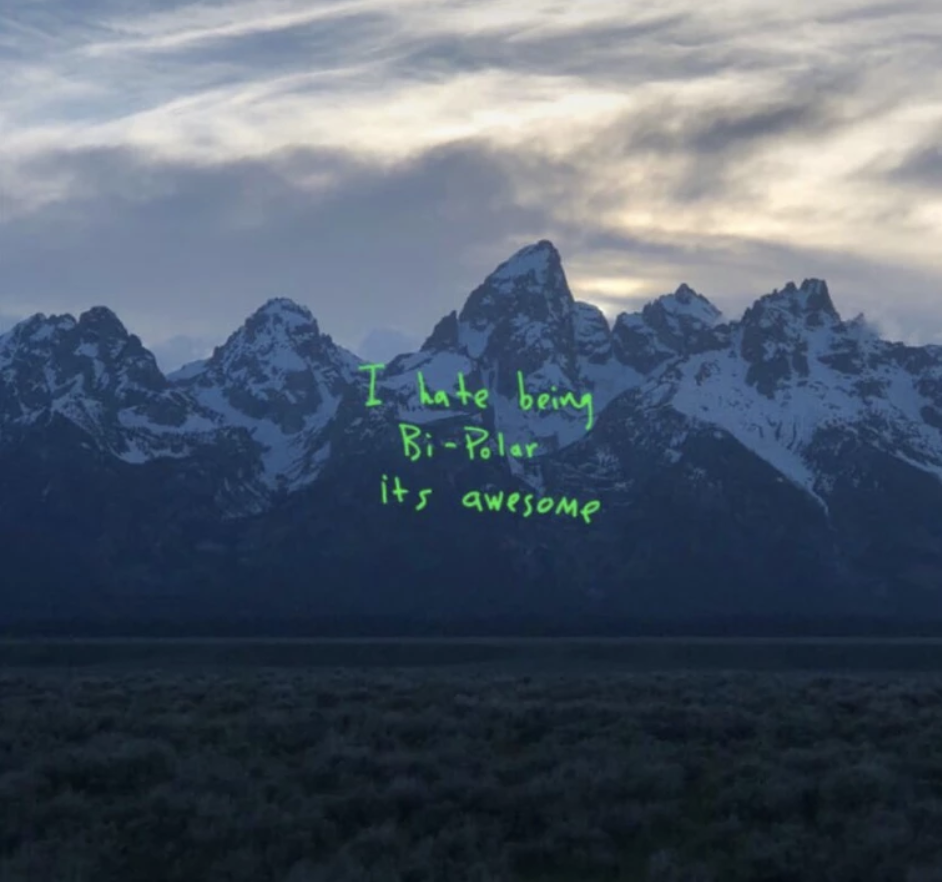 I initially thought that I would wait my prerequisite three months to listen to Kanye West’s new release, “ye” – I typically want the ‘noise’ to subside so I can take an uninhibited, zero-influence approach to an album.
I initially thought that I would wait my prerequisite three months to listen to Kanye West’s new release, “ye” – I typically want the ‘noise’ to subside so I can take an uninhibited, zero-influence approach to an album.
That didn’t quite work out – instead, I spent the weekend listening to “ye” on repeat. As I began to internalize the album more thoroughly, I feel that “ye” is ultimately a strong listen, but falls short in one area where Mr. West usually thrives – genuine honesty.
But why? What is actually going on here?
My initial thoughts after my first listen is that I think Mr. West wants the listener to feel that he is in a super dark place. Confusion and depression are underlying themes throughout the album – maybe not the “depression” associated with somebody that “lost everything,” but from Kanye branding himself as a great artist/iconoclast and feeling the pressure of living up to that standard.
Perhaps Kanye is exhausted with this role; witness him holing up in Wyoming for this album/ gaining weight/ deleting twitter/ disappearing for about a year. After an unparalleled-so-far-in-the-21st-century string of great critical & commercial albums, he thoroughly knows that “ye” needs to follow in that lineage – he MUST produce a magnum opus. The fact is, in my mind, Kanye probably just wants to hang up the mic. The “ye” album has elements soul-baring and depth; the music is heavily gospel and spiritual, though not groundbreaking like his previous work. And the length. . .this release is only seven tracks and only 24 minutes, with not one six- seven- or eight- minute track as he is wont to do? Dude is tired.
Upon my my second listening and more mental digestion, my theory expands. I think this album is mea culpa. The music, while minimal, is more labored than I even picked up on during the first listen. While gospel over soul samples with hip-hop beats is his true/primary sound – that’s basically all Kanye is producing here. Some haunting sounds and Slick Rick sample dot the production, but there is no grandeur. It’s concise musically, but basically Kanye-by-numbers. Lyrically, I perceive a sweeping, general “apology” “for whatever I may have done” – kind of half-assed with nary a desire to be genuinely specific.
Overall, I “like” the album – but this is the sound of a guy who needs to take about five to 10 years off, though I don’t know he has that in him – or if this is possible in today’s milieu. I also can’t escape the thought that this album is somewhat “making excuses” – but for what? The TMZ zaniness? His MAGA hat? Something deeper?
There is also something very peculiar about the overall “sound” aesthetic: this album lacks the complex, driving drum loops that are Kanye’s hallmark; instead, it contains a distinct minimalism; creative, assertive drum use is basically what made Kanye the producer he is today and though he is an expert at utilizing space and time in his music, he is far from a “minimalist.”
After my third trip through “ye,” I was pretty sure that this album is either a partial album and some sort of marketing tactic (a.k.a. he released Lift Yourself and the underrated Ye vs. the People a month ago yet they are nowhere to be found on the final release). My guess is that this particular “EP” release is a substandard yet well-intentioned attempt to address mental health – though even there, I don’t believe it was fully honest. Specifically, Wouldn’t Leave, No Mistakes, Ghost Town – ironically/intentionally his “gospel” tracks – have the potential to really expound upon his mental state, struggles, ‘the feels,’ but they fall short.
What “ye” does, in my opinion, is speak directly to Kim and their marriage. I stand by my assertion that this is a “mea culpa” – though it still does not feel as if Mr. West is directly apologizing or being fully honest to Kim, or more generally, his family – for the pain he caused/is causing).
Here’s another thing. This is the first time I’ve ever sensed Kanye as disingenuous. There is a willingness and a want to be introspective and extant but there is some albatross holding him back from exposing what he really wants to discover.
Not maliciously disingenuous, or even manipulative – I really, really think he wants to discover something but just isn’t getting there.
Furthermore, indulge me as I throw complete curveball that trivializes all of this – what did I really think when he went nuts on TMZ during that whole brief period? I think he cheated on Kim, or worse, and this last six week period has been an act to deflect addressing his shortcomings in their relationship. Basically he was busted and still can’t confess, and all of this “I’m crazy“ and subsequent half assed apologizing through the release of a short album, calculated erratic behavior/bipolar. . .I do not intend to marginalize any of the mental health things he is addressing but it seems to me that it’s a really, really good excuse – this “ye” album – where he doesn’t need to confess his sins/truth to Kim. I mean, when I was a dark place with my wife, I did all kinds of crazy shit just to deflect from the reality that we were living in which I caused. Didn’t matter who or what was in the way, I would manifest medical issues, excuses, apologize for literally six hours straight, write poems, sing songs, buy gifts, whatever resources I had to avoid talking about the real issues.
I kiiiiiiiiiind of sense there’s an element (or more) of that, on a really hypermediaized (hello, 2018) level.
I’m convinced that the seven songs on “ye” are the “see Kim? I made an album detailing my pain (I Thought About Killing You) our travails (All Mine) and apologizing to you (Wouldn’t Leave) and showing how much I love you (No Mistakes, Ghost Town) and care about our family and children (Violent Crime)” – and-thus are probably not the entire (real) album. There has to be more to this.
UPDATE: there’s an interview with Big Boy (previously of Power 106 fame, currently with 92.3) where he says he literally “scrapped the entire album” (after the TMZ fiasco) . This makes sense – the two tracks that were “released“ were both not on the album and sounded nothing like the album. Ironically, Lift Yourself (aka Poopity Scoop) is music wise one of the best tracks he produced this time around and to be honest and not to go more psycho babble on it but he literally might have been in a manic phase had just said “fuck it I making this song for North” because musically that song is straight dope
Lastly, there have been artists and musicians historically that are bipolar and I think there something more with his “acceptance” of it and he’s using it as a crutch like “see Kim I told you I am not right in the head.”
Sidenote: it literally makes me cackle incessantly how the critics literally don’t know how to approach this album including a (solid, but wandering) Pitchfork review.
Again – when my wife was dealing with my utter bullshit for literally three years, it was something new every week that would explain away my bad behavior – “I think I’m having a heart attack” “you have no idea how bad things are at work” “I’m under so much pressure” or literally other bullshit. If I would have thought of bipolar back then I probably would have used that as an excuse. Which is to be clear, not a trivialization of bi-polar or any mental issues. I just personally think Kanye is using that as a deflection point within his serious personal relationships or introspection and not digging into the ‘real Kanye.’
And that is where “ye,” though enjoyable, is lacking.
MLB 2017: Quick Analysis, HR Totals
My Favorite American Cities


